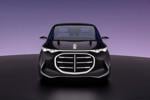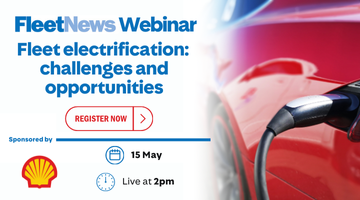Engineers at PSA Peugeot Citroen have linked radar with computers to put an end to one of the biggest hassles of taking a car into congested areas.
City Park, gadgetry that locates likely parking spots for a vehicle and then takes over the job of steering it into the space, is the result of four years’ work at Velizy, the group’s automotive research and innovation division near Paris.
Based on standard components linked with a unique software program, the feature works from two dashboard buttons, a display screen on the centre console and a soothing female voice.
Fleet NewsNet was among the first to sample a prototype City Park system, fitted to a Citroen C3, at a French military base.
At speeds below 15mph, the driver pushes the car’s Park button to activate a radar search for possible pull-ins. When one is located, the equipment makes sure the immediate area is clear and checks that no pedestrians are present before sounding a gong and flashing up notification on the screen.
With the car at rest, the driver pushes the Auto Park button and then the guidance system takes over.
The first instruction is not to touch the steering wheel.
Following that, the driver merely follows guidance instructions to move the car gently backward or forward.
The whole procedure is shown on the screen, but as the steering wheel turns one way and then another during the manoeuvre, another gong signal warns when the car is getting close to other vehicles.
City Park works with impressive ease and is surprisingly precise. In our test, it slotted the 3.83 metre long C3 into a space of just 4.5 metres in effortless fashion.
Innovation chief Eric Bonhoure said: ‘We feel this equipment has the potential to make life a lot easier for city drivers.
‘It’s deactivated the moment the steering wheel is touched after pushing the auto park button, but the tests we’ve carried out so far show drivers need to have higher than average skill to match its abilities when it comes to completing the parking manoeuvre correctly at the first attempt, particularly when traffic is waiting.
‘It should be an invaluable aid in any vehicle, but because we aim to introduce it on supermini commuter models and cars intended for city use, pricing is paramount.
He added: ‘I’m not prepared to talk about target pricing, but we are now concentrating our efforts on developing City Park to be affordable – and it could take us up to five years to bring the cost down to what is regarded as an acceptable level.’
RK – how it works
Two forward-facing sensors scan the road ahead and provide a stream of input to a central control unit, which also receives data on how fast the car is travelling. Using the two sources of information, the City Park system determines where a gap is large enough for the car and advises the driver where to stop.
From then on it is almost all down to software and the standard electronic power steering of the C3. Working with the rear sensor, the system calculates the exact position of the car, instructs the power steering and advises the driver when to move the car forwards, backwards or stop.
Your fingers do all the leg work

Fingers could soon be doing the work of feet in next generation versions of the cars Peugeot and Citroen line-up against rivals in the fleet car market.
As part of plans to capitalise on the growing sophistication of computer management systems, the French group is investigating radical moves that would replace the traditional mechanical linkages that operate vehicle steering and braking systems with electronic connections.
Described as X-by-Wire and previewed on the C-Crosser and C-Airdream concept models unveiled by Citroen on the international motor show circuit in 2001 and 2002, the tomorrow’s world system is now being tested in real-world conditions across Europe on a fleet of five C5 five-door models.
As in the aerospace industry, which originally developed X-by-Wire, the gadgetry uses electronics to link controls with the sub-systems that accelerate, steer and brake, and the lack of a steering wheel rim brings aircraft styling to the C5 cabin.
But with your hands in the ‘quarter-to-three’ position on the joystick-type pod, access to two big accelerator paddle switches falls in easy reach of thumbs.
Applying the brakes is just as easy – triggers at either end of the truncated wheel need only to be squeezed gently to slow down the car, and squeezing any of them effects an emergency stop.
Arranged as ergonomically as seems possible, the odd-looking set-up soon feels natural in use and needs minimal effort, particularly as it is harnessed to all-electric variable ratio steering that responds sharply at low speeds.
Linked to a 3.0-litre V6 engine and automatic transmission, the layout represents the ultimate in multifunctional steering wheels by also combining switches for the lighting, wiper, headlamp washers and horn.
Research fleet chief Guy Demichel said: ‘Safety is a key consideration in this layout. It might appear strange with no pedals on the floor, but doing away with mechanical linkages and the steering column means the risk of injury is reduced in the event of an accident.
‘We’re finding that it takes less time to operate the brakes with fingers than legs – and having more space in the car is better for postural comfort. But now we’re happy with the system, our next priority is to develop the technology at the right price. ‘Unfortunately, that takes time and it could be 10 years before we put it into production.’
By Wire – how it works
On a car with automatic transmission, X-by-wire banishes the mechanical steering column, brake and accelerator pedals and replaces them with a set of electronic controls on a radically redesigned steering wheel.
Citroen’s new wheel turns up to 90 degrees either side of the central position and simply sends a signal to an electric power steering unit similar to that already used on some of the firm’s cars.
An electro-hydraulic brake control unit operates in a similar way to a conventional brake master cylinder but responds to electronic input from buttons on the wheel rather than mechanical input from a brake pedal.

















Login to comment
Comments
No comments have been made yet.